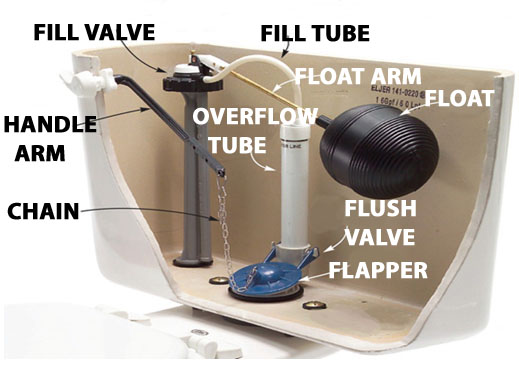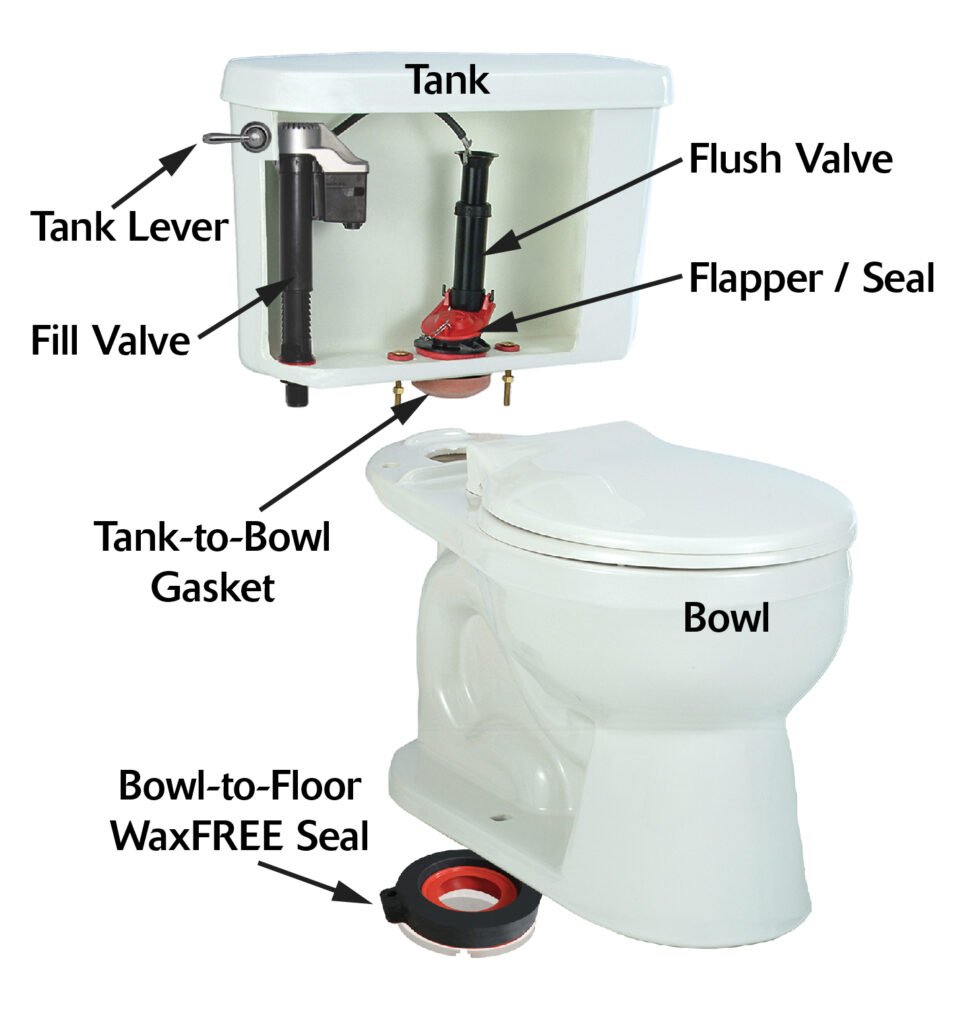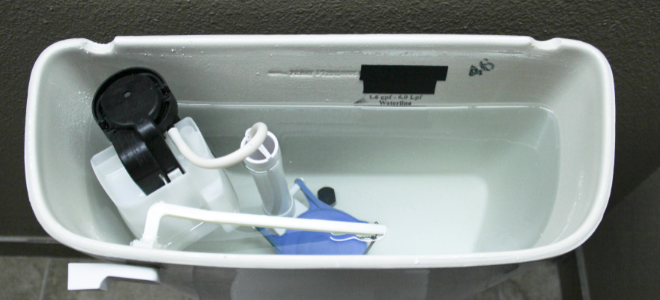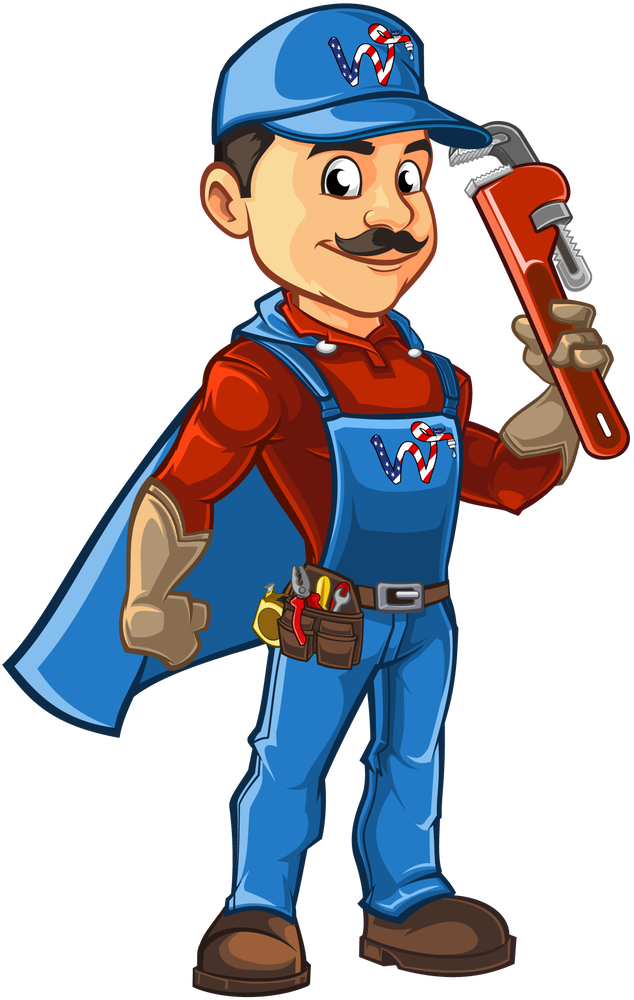
If you’ve ever had the unfortunate experience of an overflowing toilet, you know how plumbing problems can quickly become a nightmare. Toilet overflow is one of the most common plumbing issues, and it can happen for a variety of reasons.
Thanks to how common this situation is, it is rather easy for a professional to figure out what is wrong and how to fix it. In this article, we will be detailing some of the most common reasons why your toilet may be overflowing. Keep reading to learn more.
Stopping Your Overflowing Toilet
If your toilet is overflowing, the first thing you should do is turn the water to the toilet off. This will allow you to stop the water from continuing to overflow into your bathroom. First, you will want to take the lid off your toilet tank. You will want to press down on the flapper valve; the flapper will keep any more water from getting into the toilet bowl. Next, you want to lift the fill valve so that the tank stops refilling.

After this, you should turn off the main water supply to your toilet. Check near the base of your toilet and you should find a pipe with a valve on it. When you turn that valve and tighten it, it should turn off the water supply to the toilet.
If this still does not work, go ahead and turn off the main water supply to your home.
Common Toilet Overflow Reasons
The good news is that in most cases, an overflowing toilet can be easily fixed with a little troubleshooting. In this article, we’ll explore the top five reasons why toilets overflow, as well as some simple tips on how to fix the problem.
A clogged toilet
One of the most common causes of an overflowing toilet is a clog in the pipes. When your toilet becomes clogged, water has nowhere to go but up and out of the bowl. If you suspect that your toilet is clogged, the first thing you should do is try to remove the clog with a plunger. If that doesn’t work, you may need to call a plumbing professional to clear the pipes.

A broken flapper
The flapper is a rubber stopper at the bottom of the toilet tank that allows water to flow into the bowl when you flush. If the flapper is broken or not sealing properly, it can cause water to slowly leak into the bowl, eventually leading to an overflowing toilet. To fix this problem, simply replace the flapper with a new one.
If you are going to replace a broken flapper, turn off the water supply to the toilet so you do not need to work with your hands and arms in the toilet tank water. While the water in the tank is sanitary, it can be a little more difficult to work with your hands in the water.
The flapper should be attached to a chain, and that chain should attach to the handle arm. Remove the chain from the handle arm, and then remove the flapper from the bottom of the tank. Then, you can replace it with a new flapper. Likely, there will be two hinges on the flapper that will connect to the flush valve.
Reconnect the flapper chain to the handle arm. You will want to make sure it’s not too tight that it keeps the flapper lifted and not so long that it leaves the potential for the chain to get caught under the flapper itself. After this, you can turn your water back on!
A faulty fill valve
The fill valve is responsible for regulating the flow of water into the toilet tank. If the fill valve is damaged or not working properly, it can cause water to enter the tank too quickly, eventually leading to an overflowing toilet. To fix this problem, you’ll need to replace the fill valve with a new one.

Like with the flapper, you should turn off the water supply to the toilet. Flush the toilet to allow the tank to drain before you begin the replacement. The fill valve is next to the flapper that has the float attached to it, as well as the overflow pipe.
Your fill valve is directly connected to the water supply line. Loosen the nut that connects the two pieces and then remove the fill valve. Put the new valve in place and connect it to the overflow tube and the water line. Make sure all of the washers are in the right places and that everything is tightened so it has a watertight seal. Now you can turn the water supply to your toilet back on. You can adjust the float as necessary, and if the fill valve was the problem, this should fix the overflow problem.
A leaky gasket
The gasket is a rubber seal that sits between the toilet bowl and the tank. You may have also heard the gasket referred to as the wax ring. If the gasket is worn out or damaged, it can cause water to leak from the tank into the bowl, eventually causing an overflow. If it does not overflow from the bowl, you may also find that the water will overflow from the bottom of the toilet. Your toilet’s gasket may be leaking for a variety of different reasons, including loose bolts and general wear from time passing.
To fix this problem, you’ll need to replace the gasket with a new one. However, you will need to remove the toilet itself in order to get to the gasket. Because of this, you may want to call a professional to address the problem. This way, you will not need to worry about moving the toilet yourself and can leave it up to an individual with the proper expertise.
A broken float

The float is a buoyant device that sits in the toilet tank and helps regulate the flow of water into the bowl. If the float is broken or not working properly, it can cause water to enter the tank too quickly, eventually leading to an overflowing toilet. To fix this problem, you’ll need to replace the float with a new one.
Your toilet likely has either a ball float, which looks like a balloon floating at the top of the water in the tank, or a cylinder float – a thin metal rod that connects to the fill valve. The cylinder float is the newest version of the float, but the ball float is still very commonly found in many homes’ toilets.
Your float may just be incorrectly placed. You will want the water level in your tank to be about one or two inches below the overflow tube. If your float is correctly placed and the water is still overflowing in your toilet, you definitely want to consider replacing the float. As always, you can contact a professional to come and take a look at what exactly is happening with your toilet.
Contact White’s Plumbing LLC
If your toilet is overflowing, it’s important to act quickly to resolve the issue. In most cases, an overflowing toilet can be easily fixed with a little troubleshooting. However, if you are unable to fix the problem yourself, it’s always best to call a plumbing professional for assistance.
If you are located near the Youngsville, North Carolina area and are looking for a plumber to assist you in stopping your toilet from overflowing, contact us here at White’s Plumbing, LLC! Our expert plumbers have years of experience in the industry so no matter what is the cause of your overflowing toilet, we are sure to get to the bottom of the issue. Give us a call or fill out the form on this page and we will be in touch with you soon.




